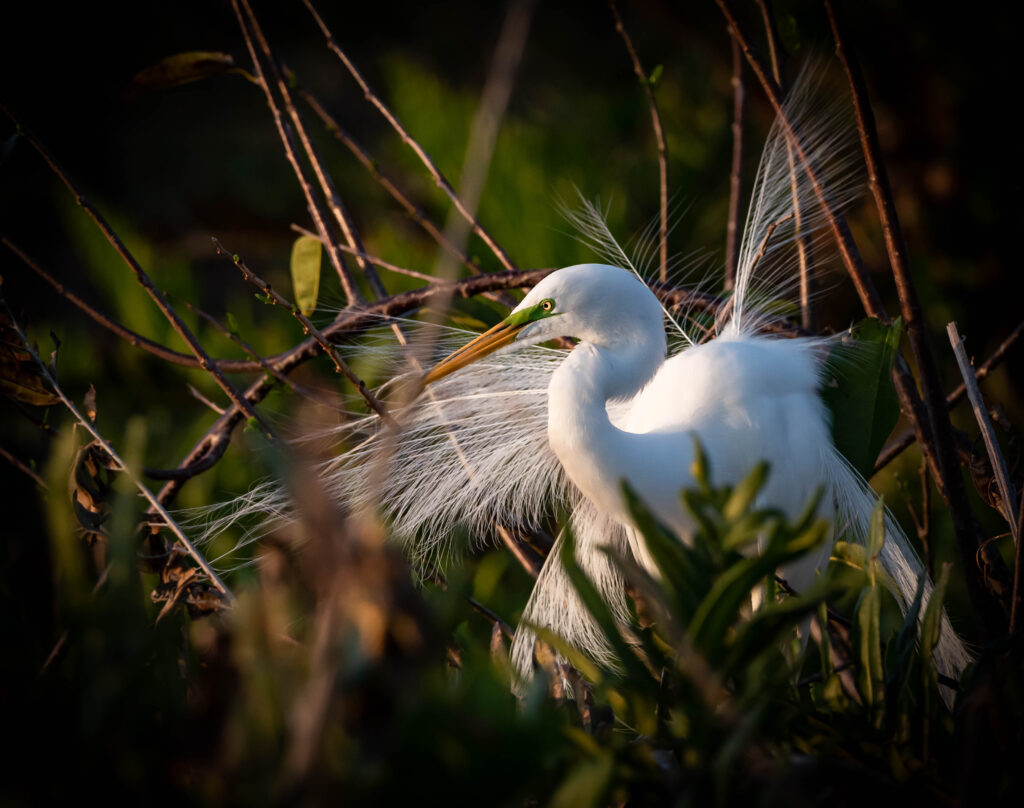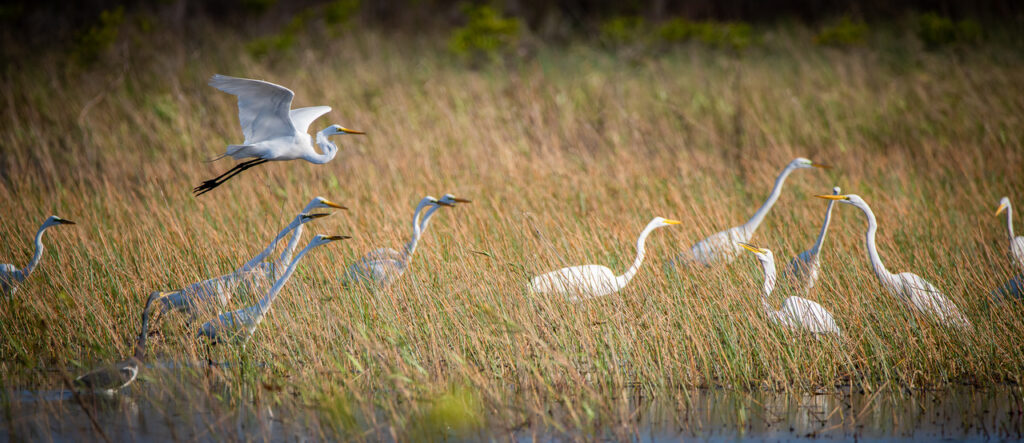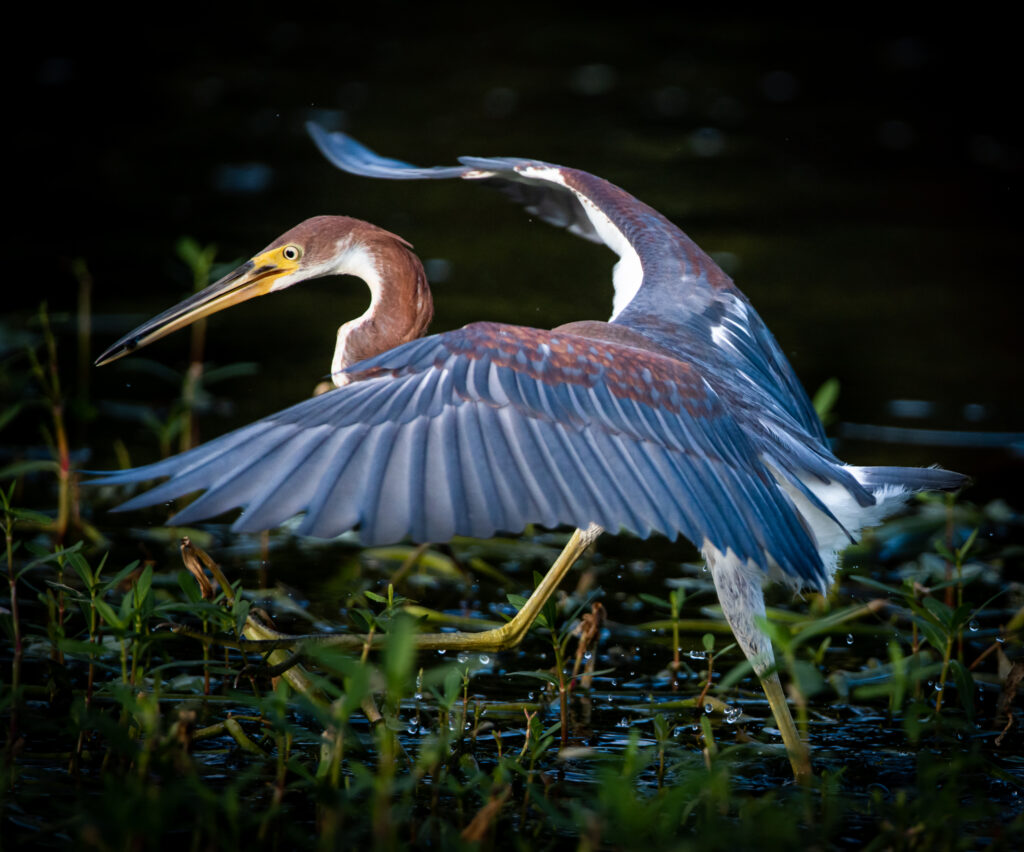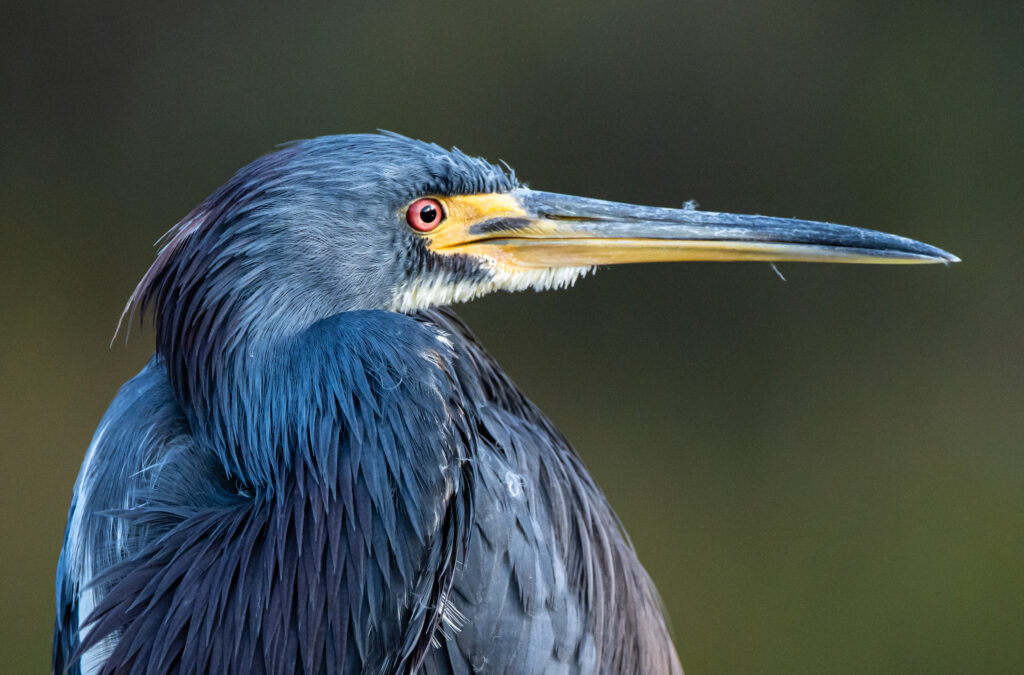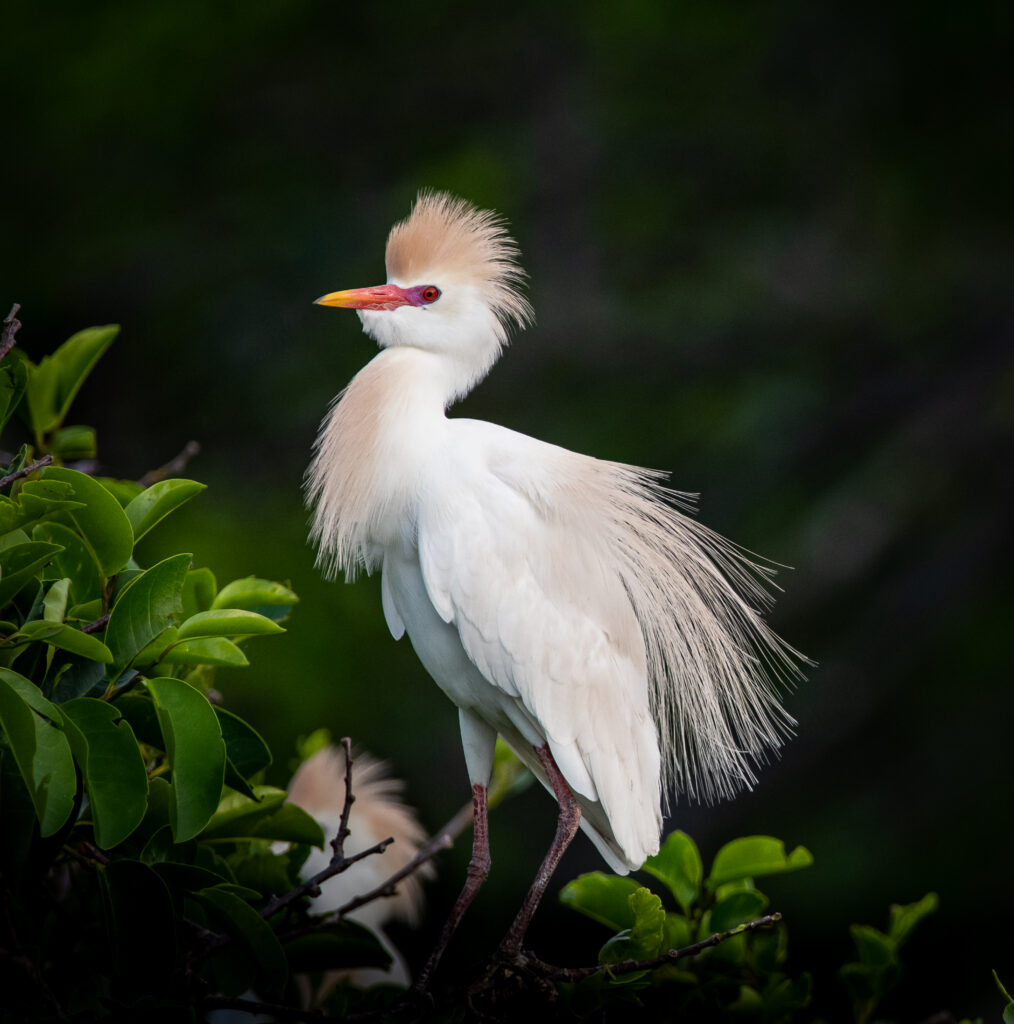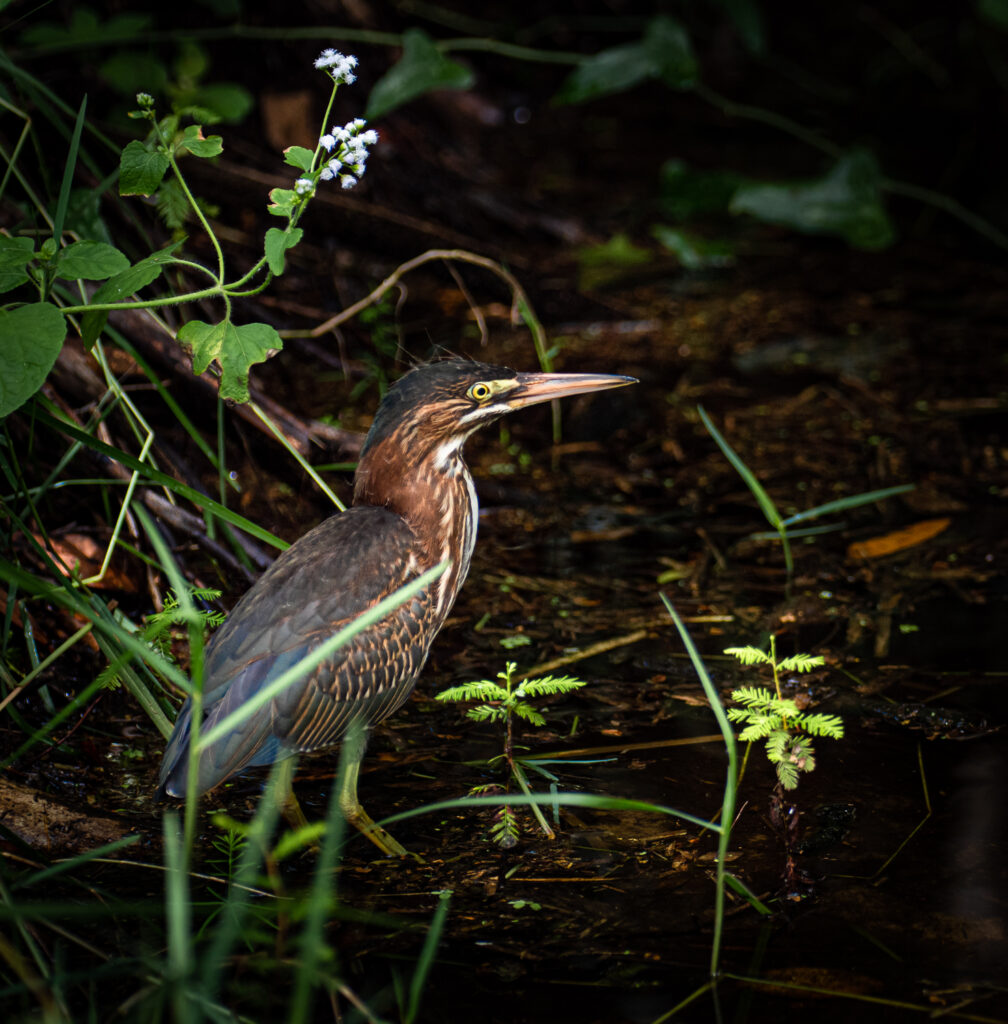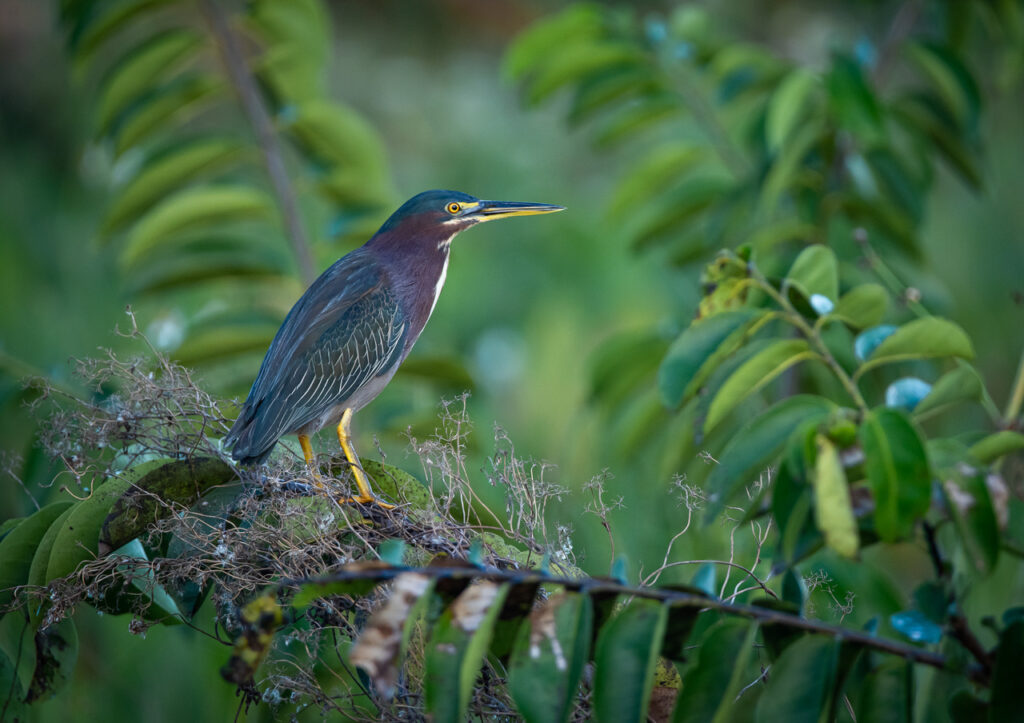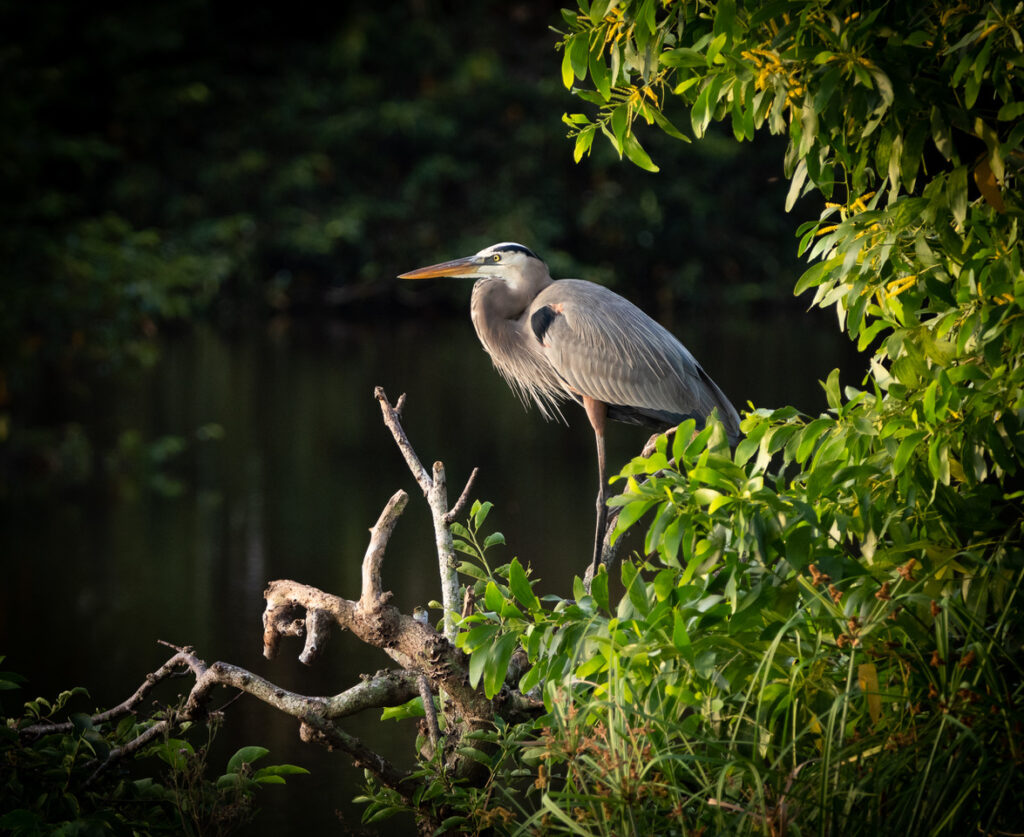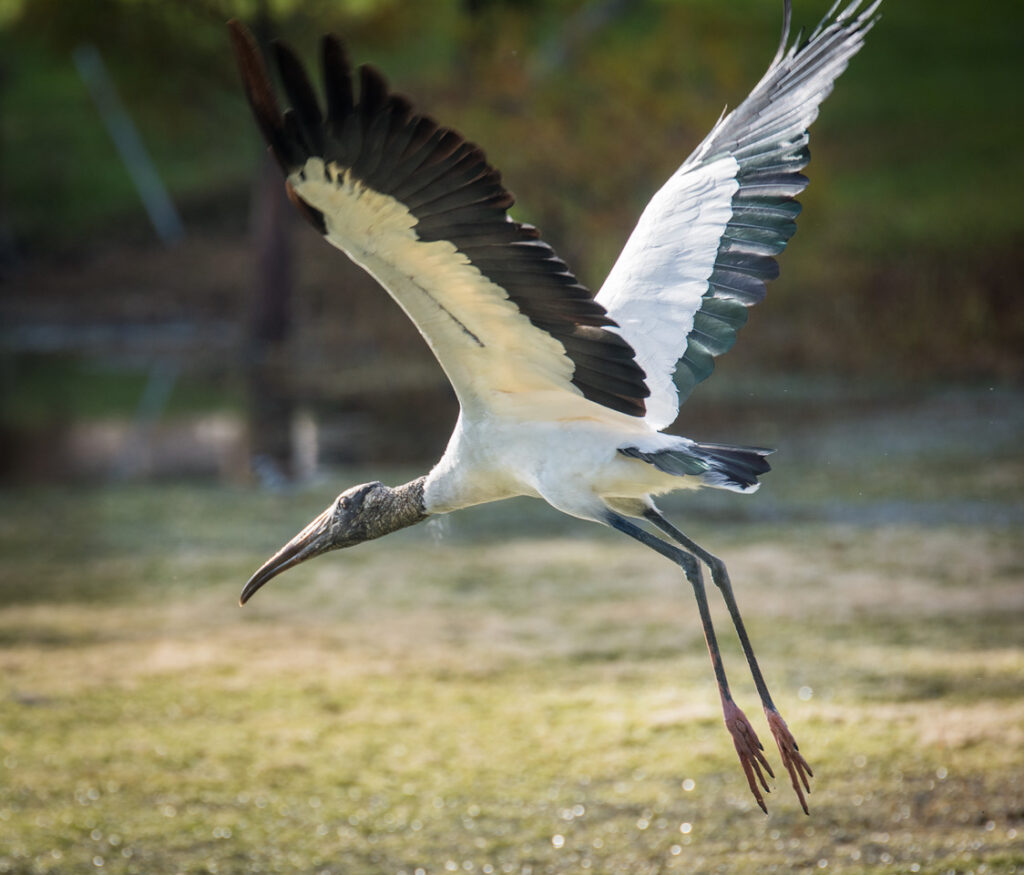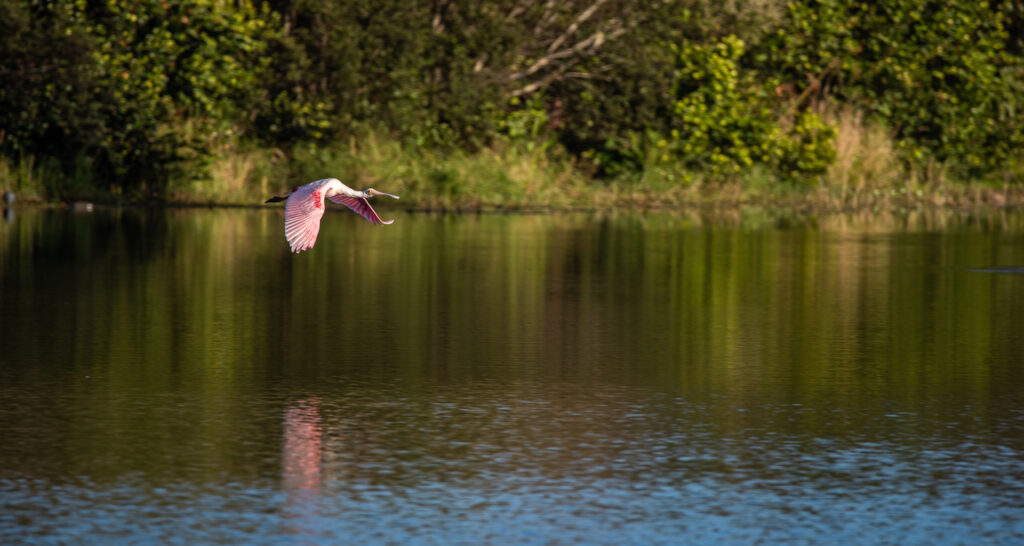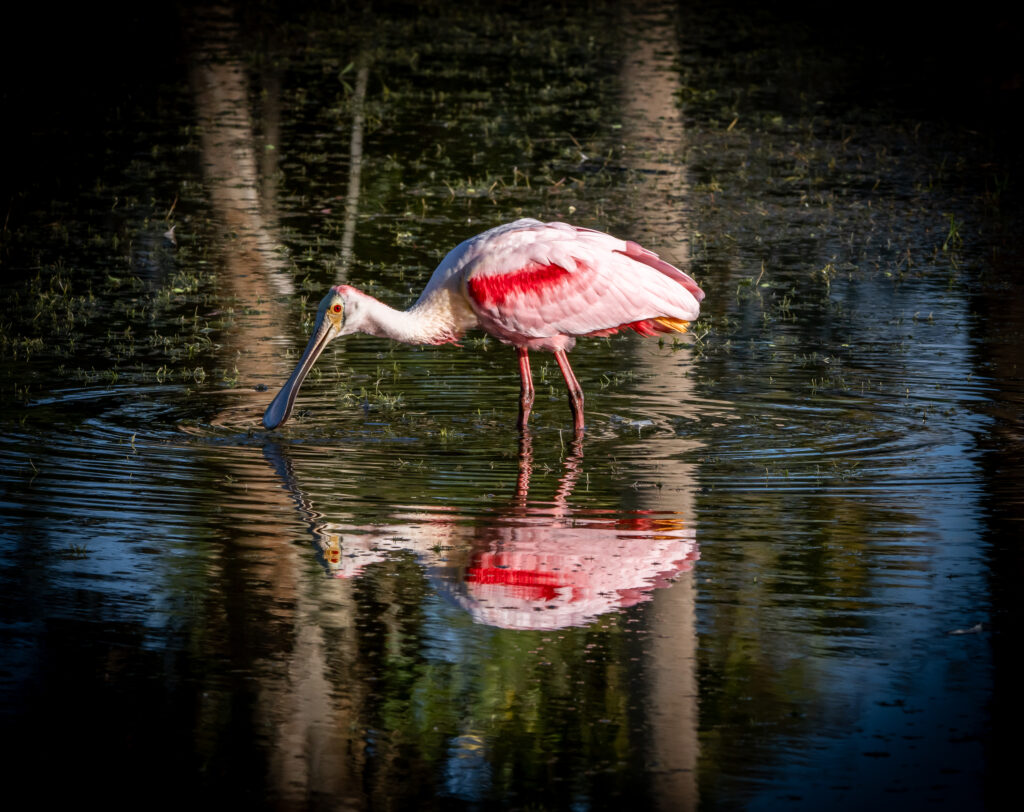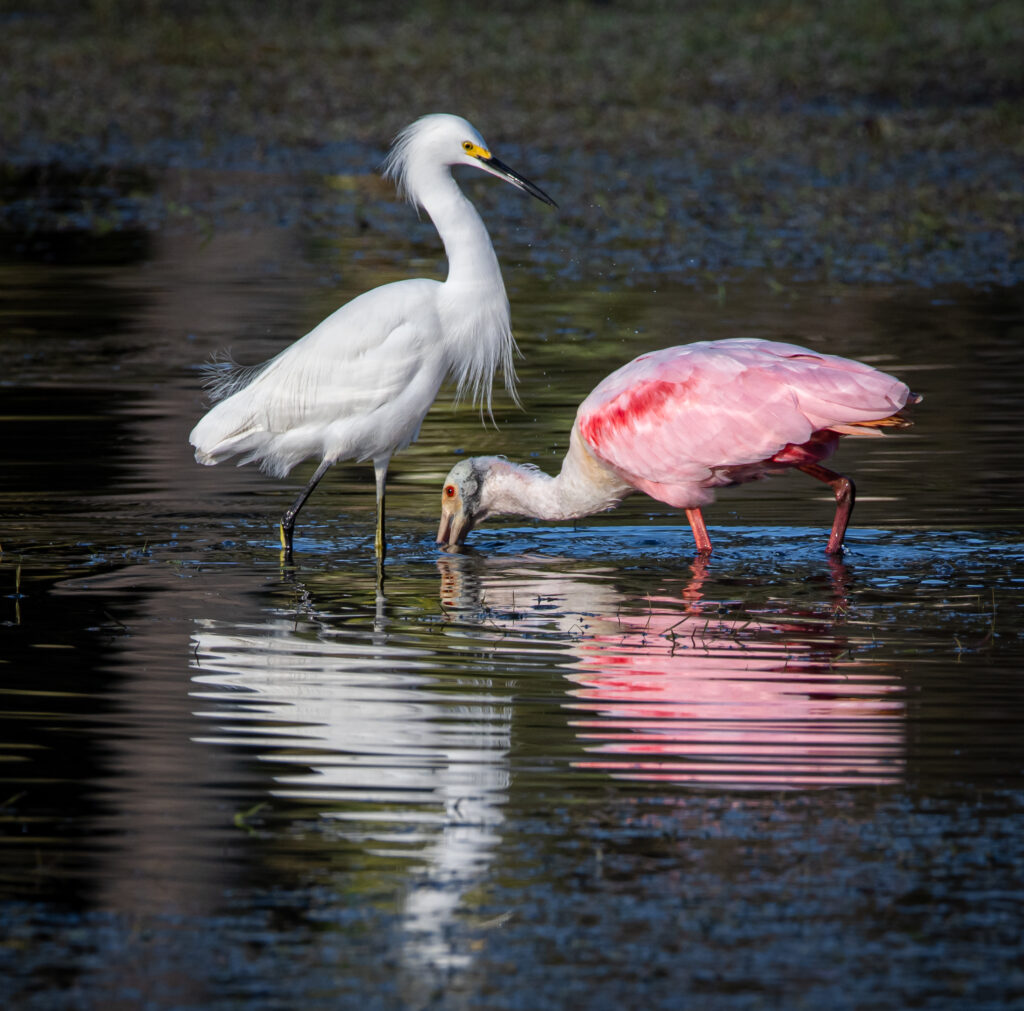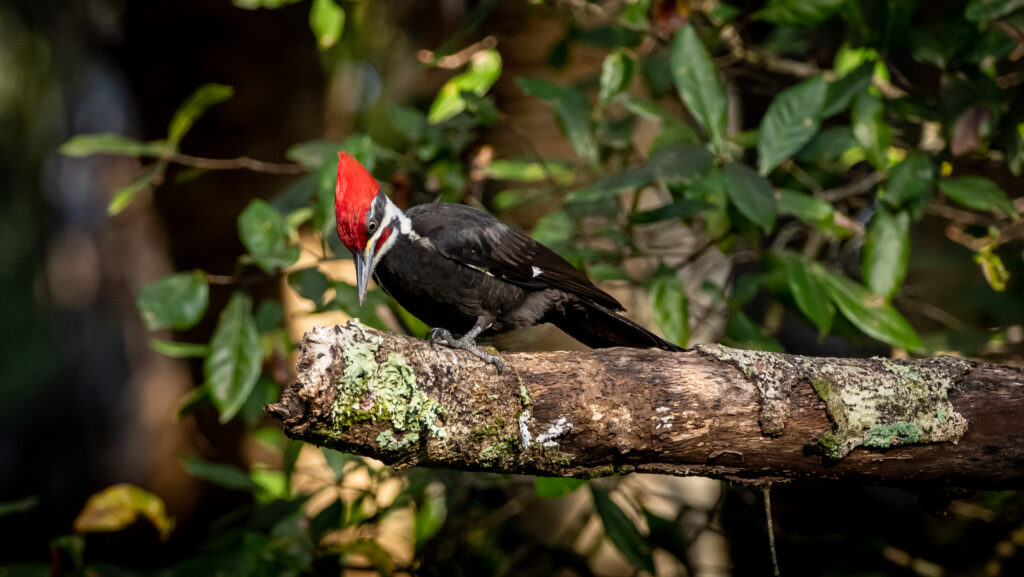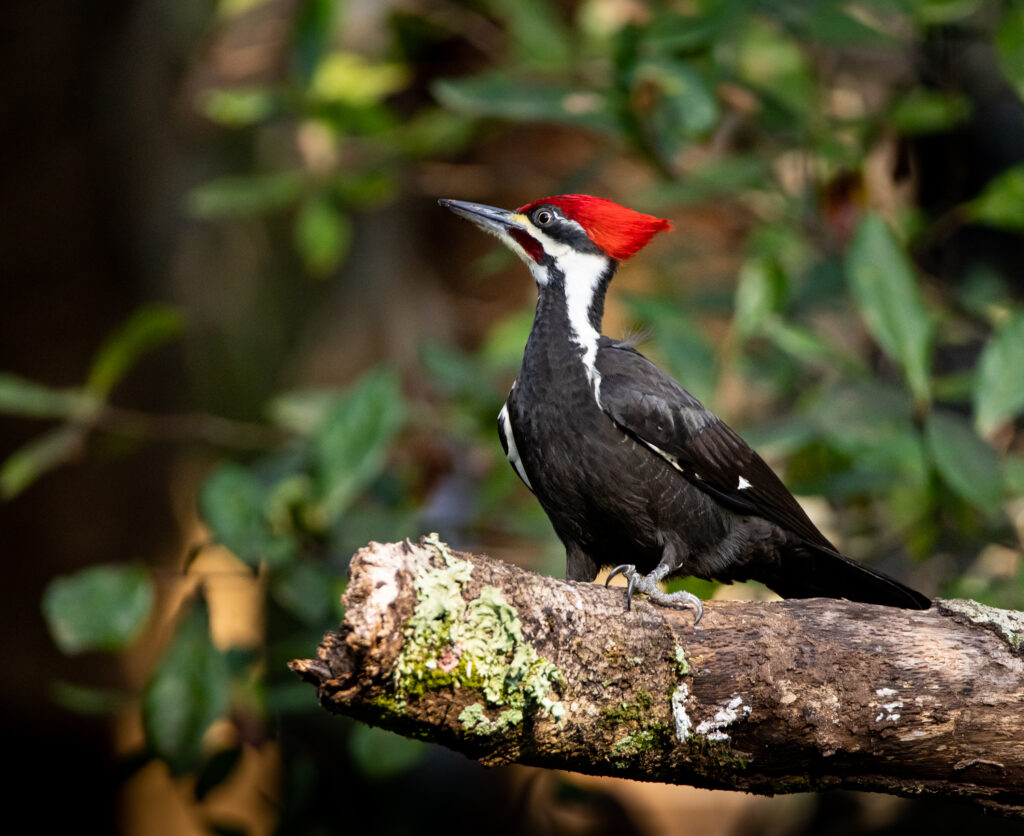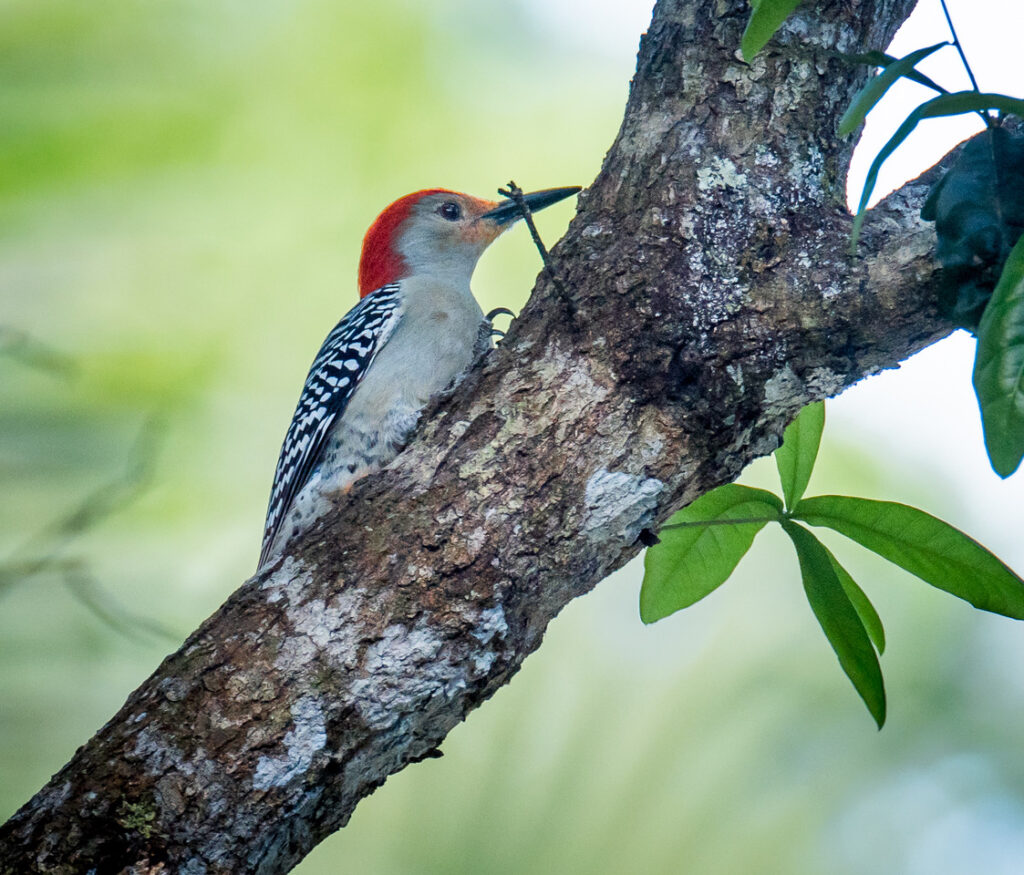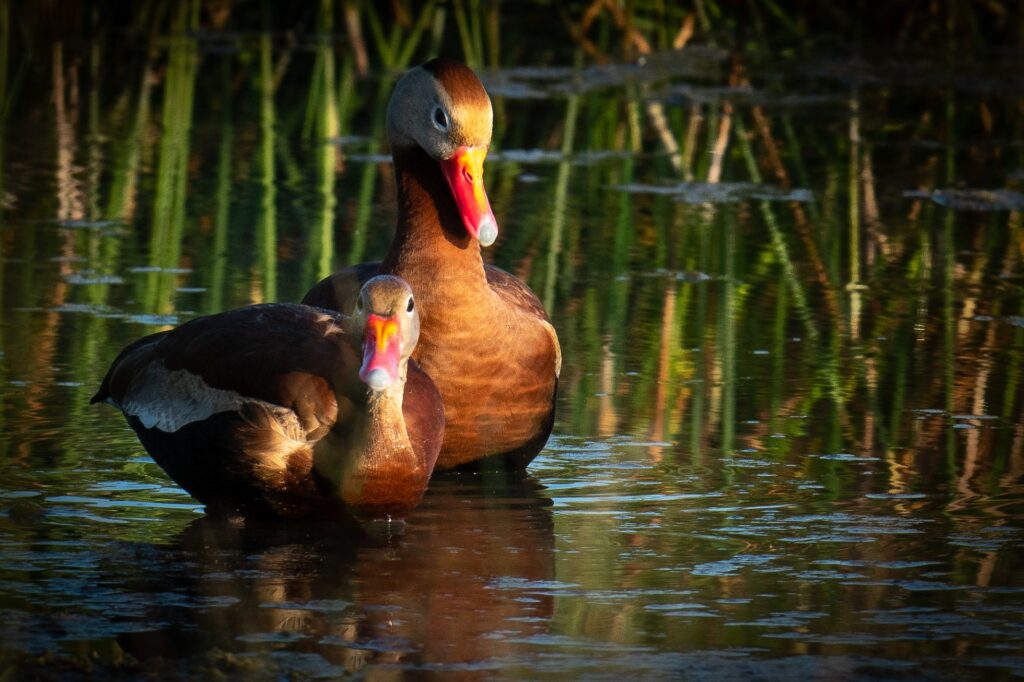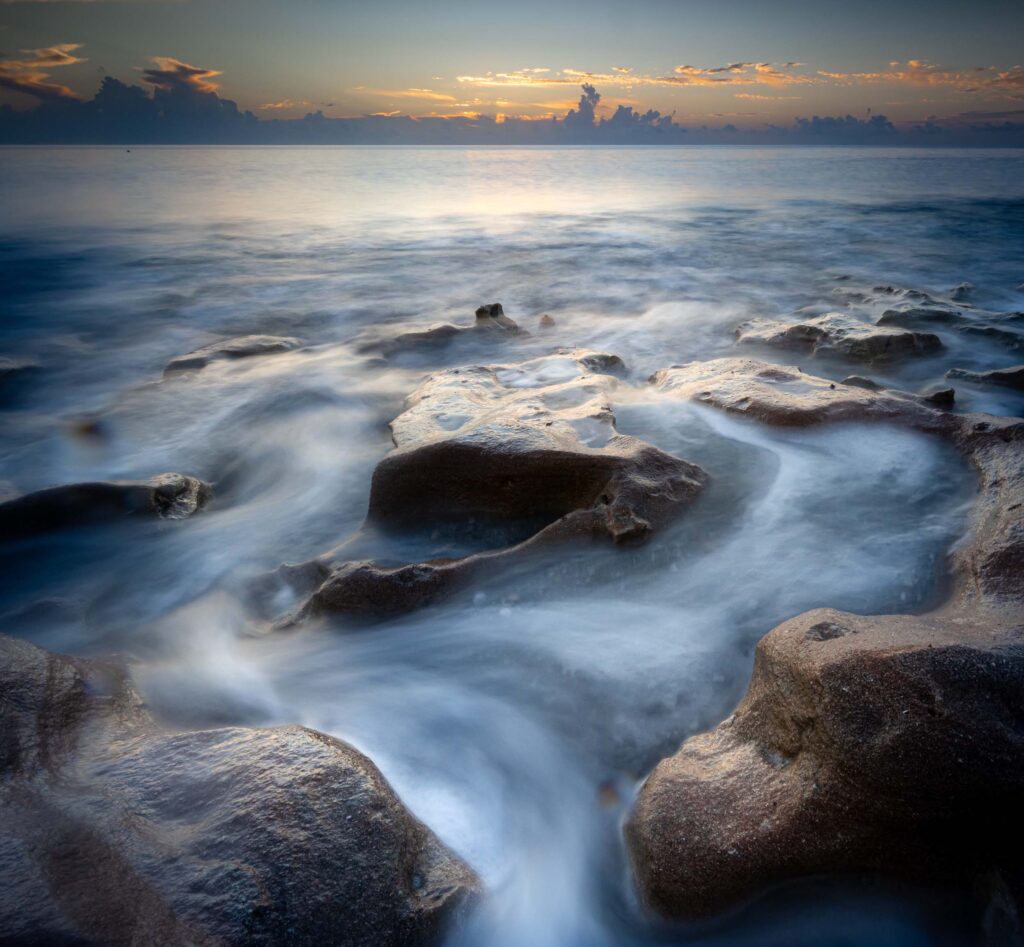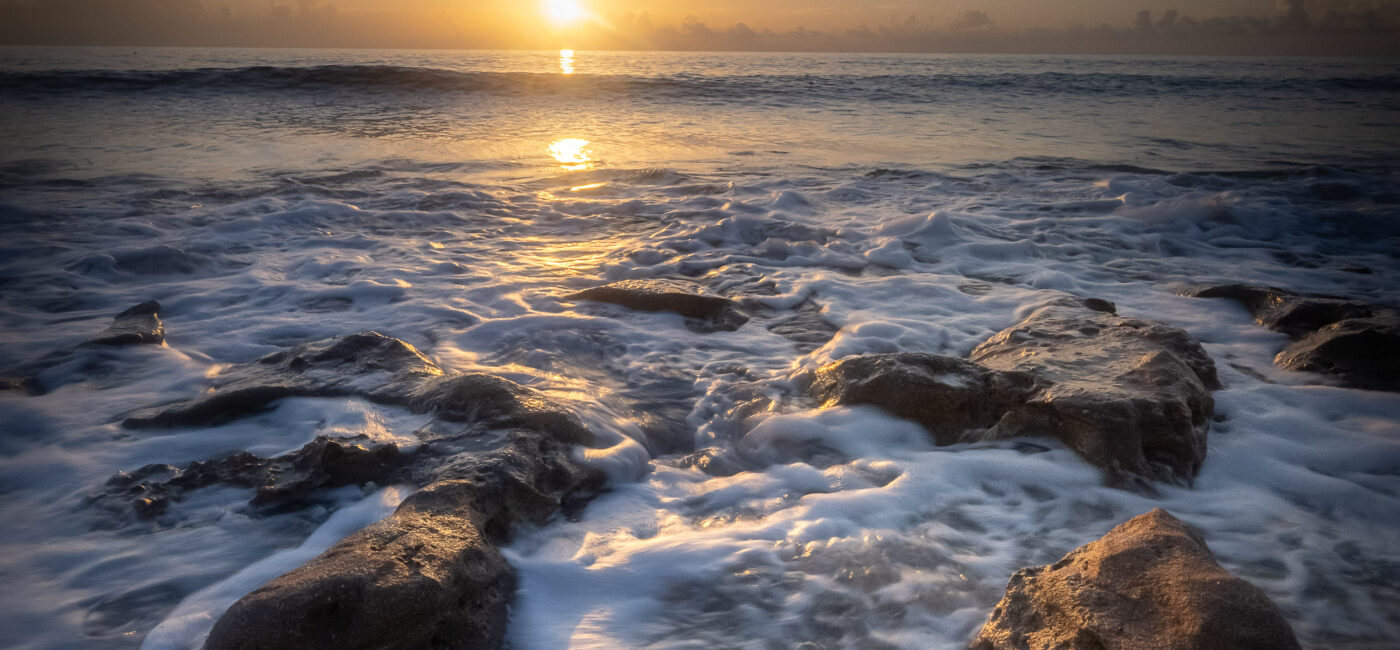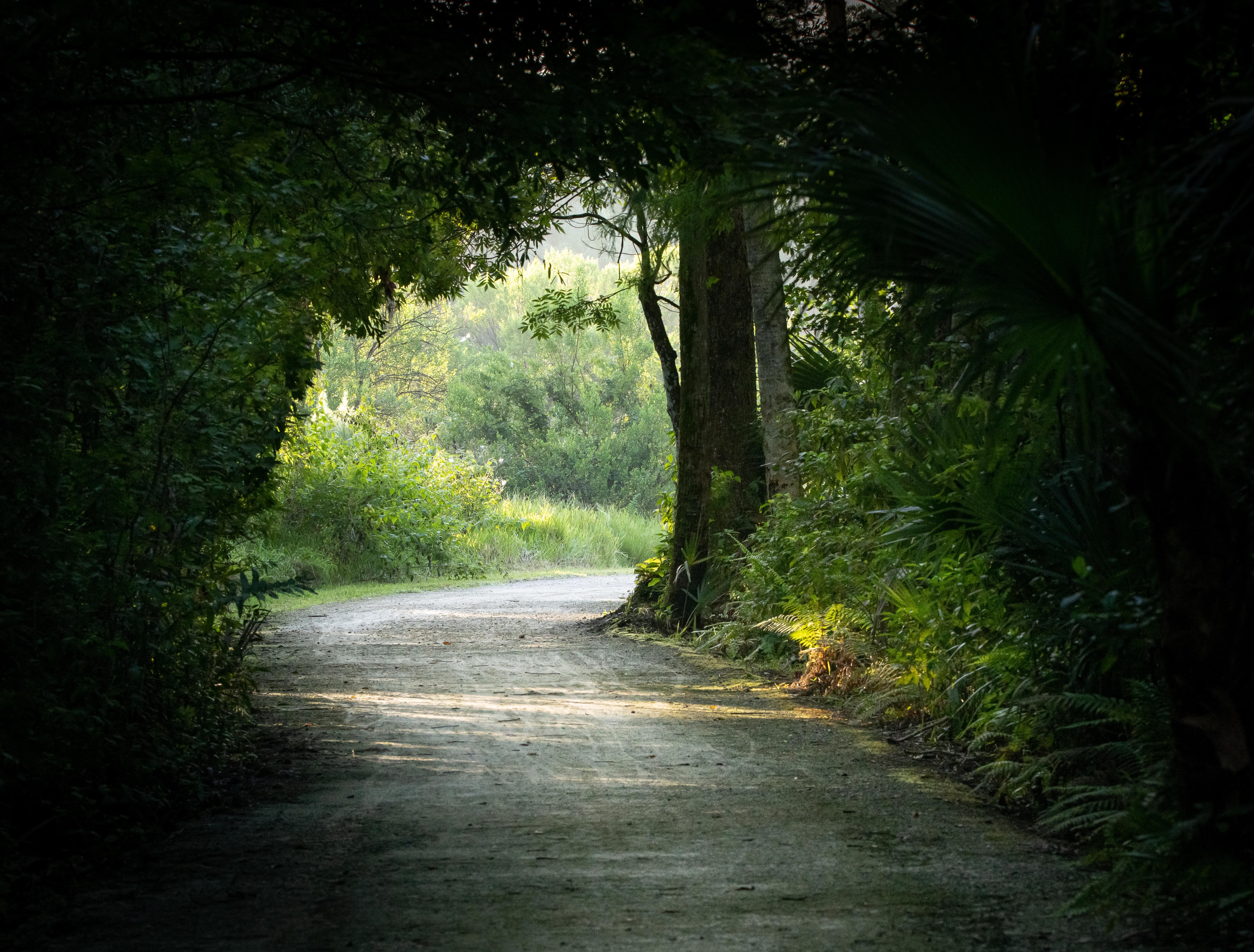
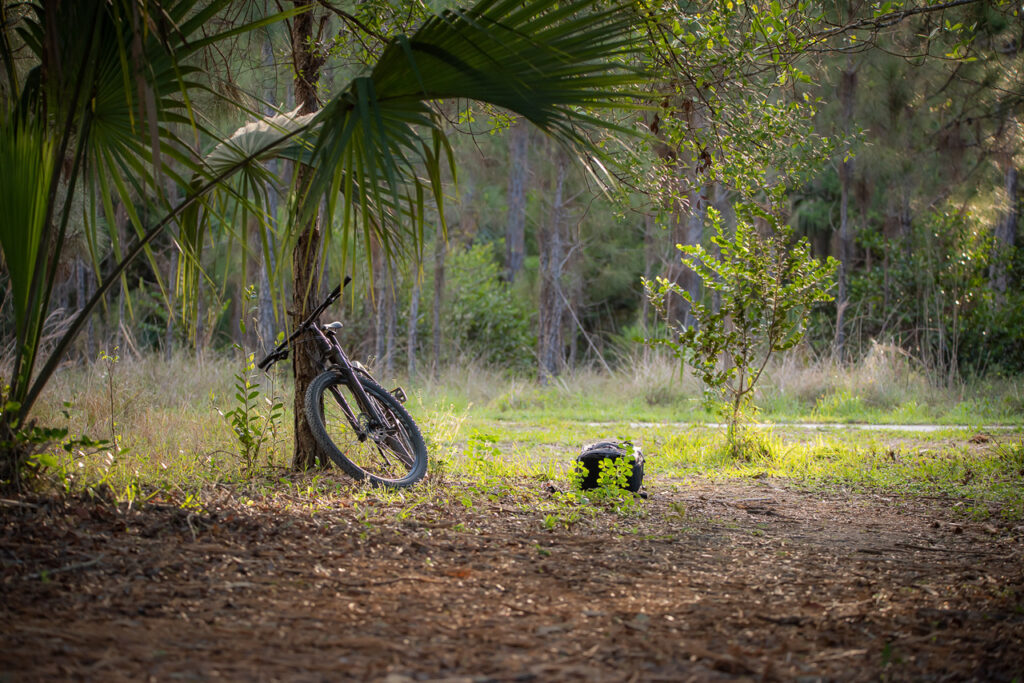
I love to capture three types of images: Landscapes where water predominates: Portraits of unique animals in their environment. And the wonders of the night skies–such as the Milky Way and Aurora Borealis.
When the camera shutter is kept open for a few seconds in sunlight–the movement of waves, rivers and clouds turn a landscape photo into an impressionist painting. When the camera shutter is kept open on a moonless night–wonders of the universe are revealed– like our Milky Way Galaxy and in some locations–the Aurora Borealis.
Photographing nature’s
wildlife provides the excitement and rewards of a treasure hunt: mapping where the treasure might be, traveling great distances to an exotic destination, then climbing, hiking or paddling to get close to the treasure. The goal is to capture an animal behavior that gives us insight into their world and inspires viewers of the image to preserve and protect this treasure.
Capturing the wonders of the night sky requires traveling to a dark sky location while timing clear weather and a new moon phase. Nobody said this would be easy! But when the place and moment is right, the camera can act as a powerful telescope. Light from distant stars builds up on the camera’s sensor during long exposures and gives us images that we could never see with just our naked eyes.
I am fortunate to live in Palm Beach County, Florida–where some of the most exceptional beaches and wilderness areas have been forever preserved. I am grateful to the Palm Beach County Commissioners and the Palm Beach County Parks and Recreation Department for protecting and managing outstanding natural areas such as Riverbend Park in Jupiter and Green Cay Wetlands and Nature Center in Boynton Beach.
These parks offers visitors an experience that rivals the best National Parks in America–on a much smaller and intimate scale. In these well-managed areas, photographers can safely and easily explore the treasures of the natural world.
I invite you to join me for a journey of discovery into two of Palm Beach Counties’ most remarkable parks and nature preserves. I teach photography courses each fall, winter and spring through the Lighthouse ArtCenter in Tequesta, Florida. You can learn more at http://www.lighthousearts.org
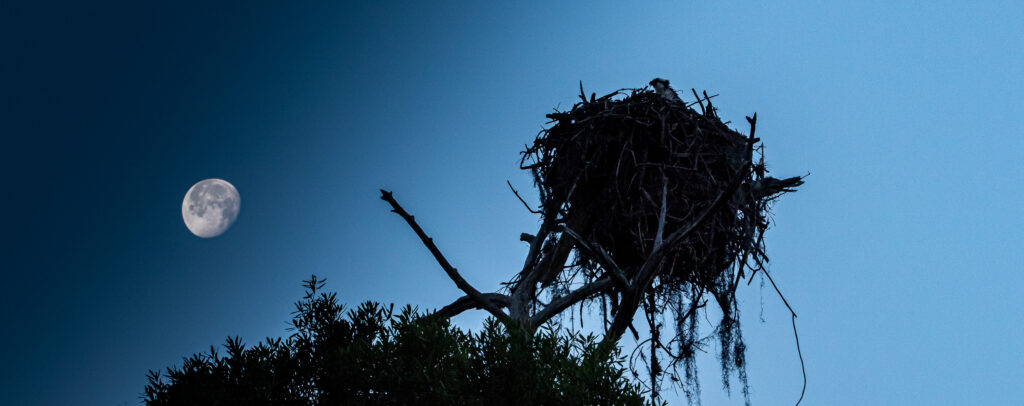
The full moon remains in the pre-dawn sky to showcase an active nest of Ospreys.
Riverbend Park in Jupiter opens at sunrise. We arrive early, park outside the gate, and unpack our bicycles off the rack in the chilly north wind of just passed cold front. We pedal into the dark with camera gear in our backpacks.
The full moon illuminates the shell rock trails. A sharp squeal of an Osprey breaks the silence of the still asleep forest. We look up to spy a nesting pair of what Florida natives once called “Fish Hawks” or “Sea Eagles”. The male opens his wings and in an instant is high above Cowpen Lake. Clouds of mist roll along the surface. A school of olive-colored bream swim between pads of swamp lilies. They are invisible to us, but not the sharp eye of the Osprey. He starts a dive from a hundred feet above. His wings are tucked tight and his large talons are stretched forward. In a fraction of a second the surface explodes and he arises with a wriggling fish. The bream struggles for its life, attempting to break free, but the Osprey’s talons have speared deep into his flesh. The Osprey soars across the lake and lands on the branch of a towering pine to nourish himself before taking the remains to the nest.
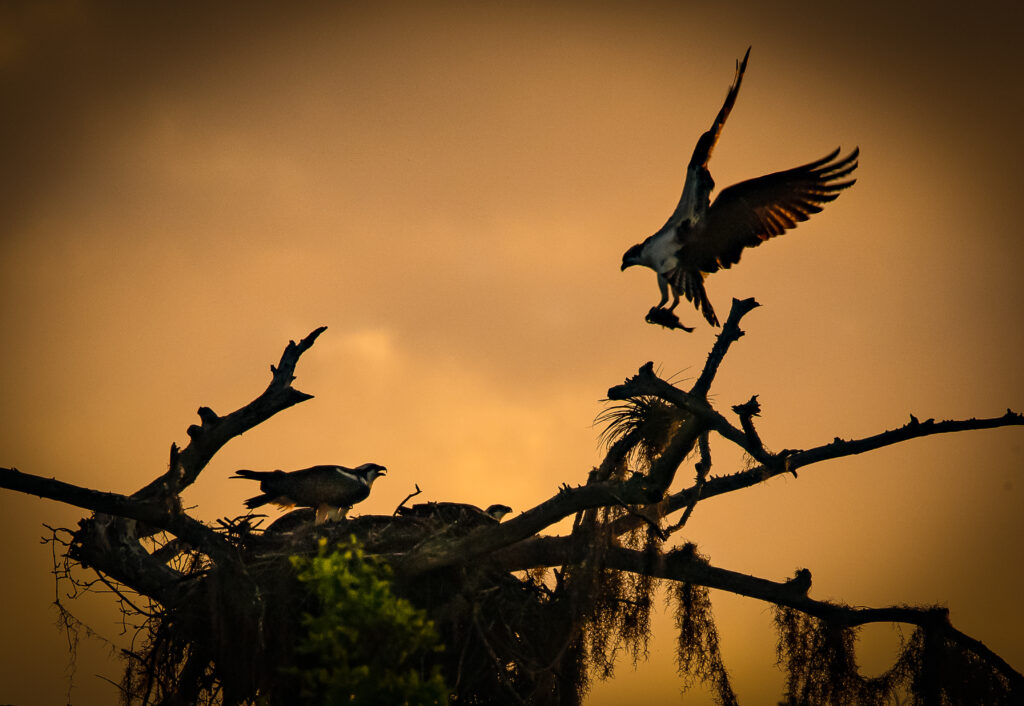
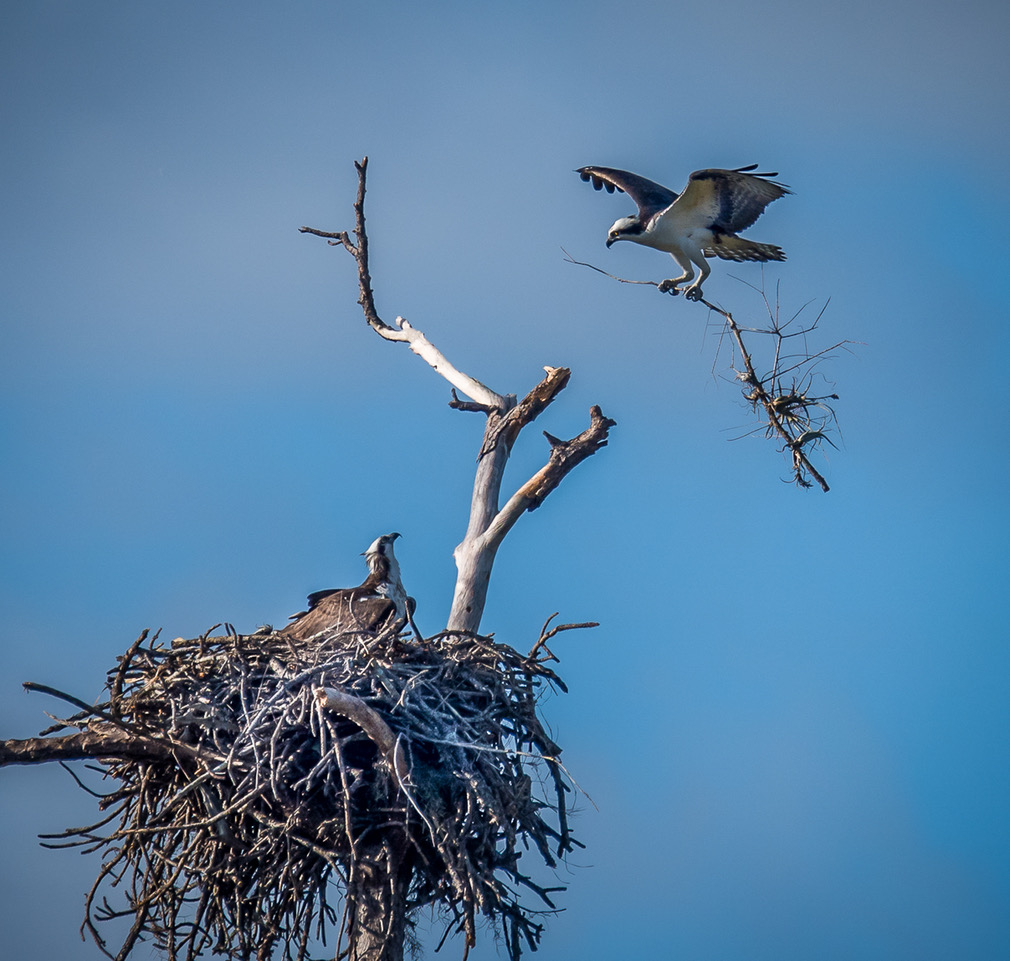
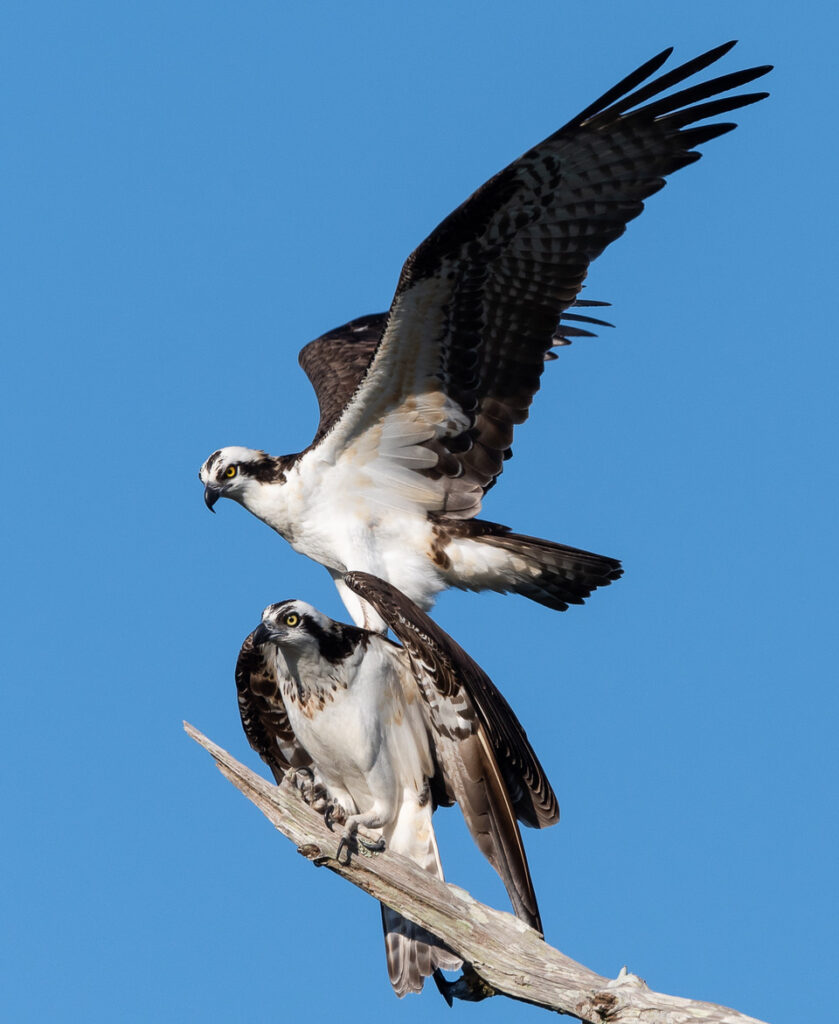
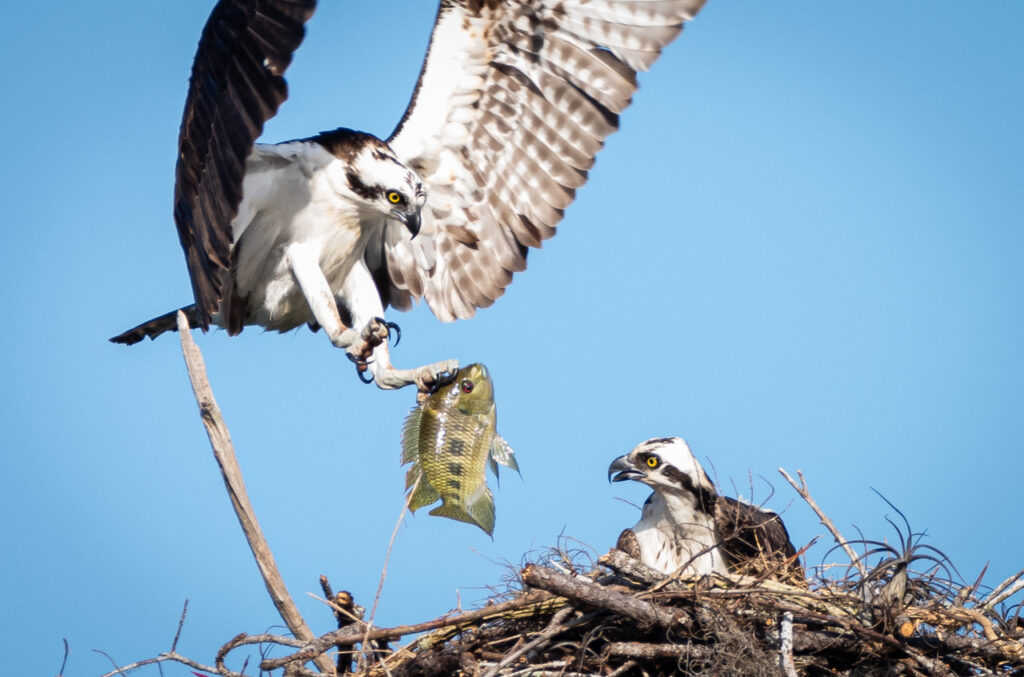
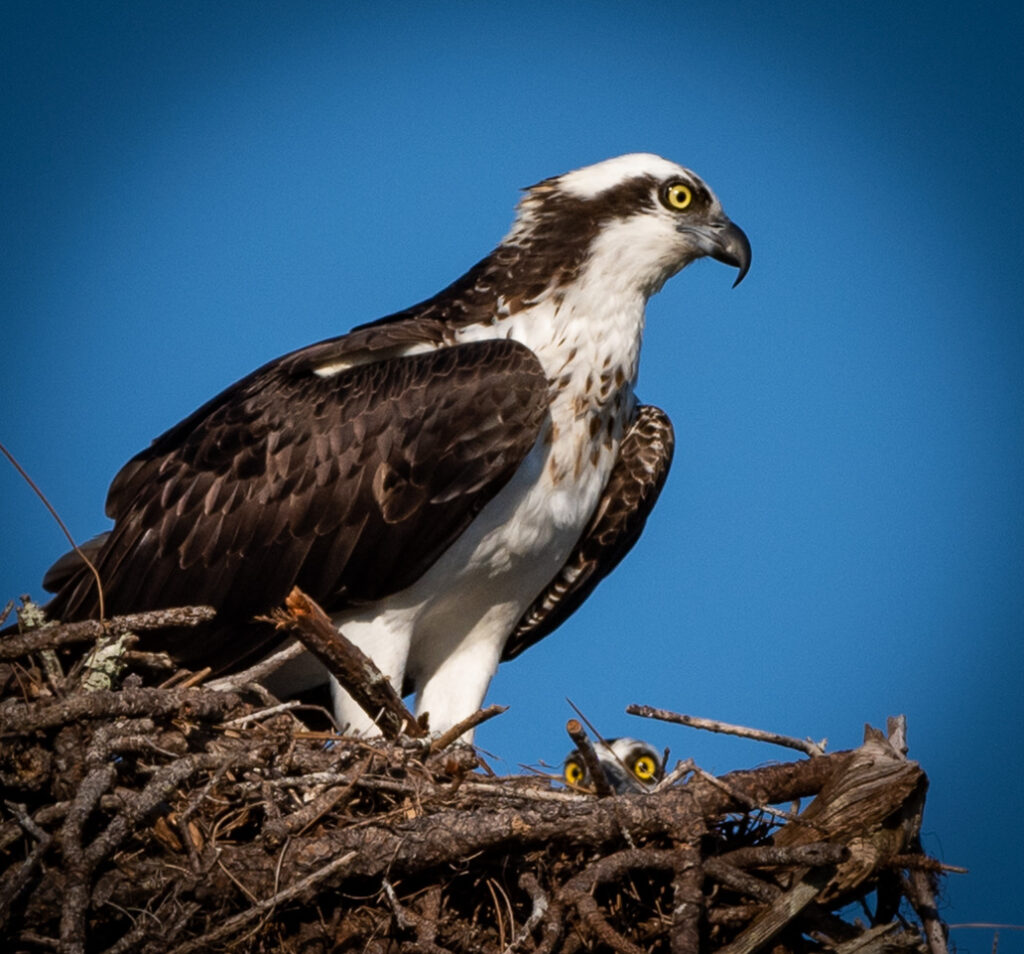
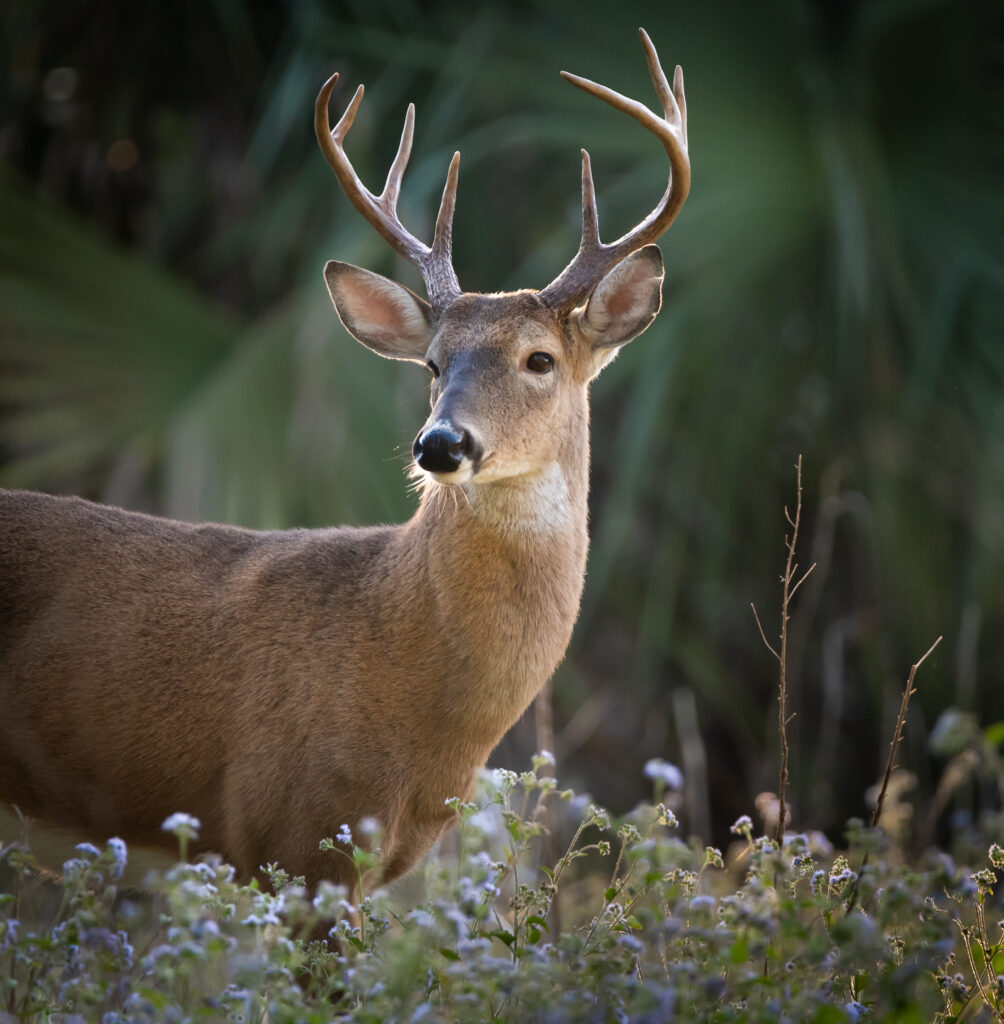
White-Tailed Deer move easily through the dense brush of Riverbend’s 780 acres. They emerge from the hardwood forests to forage on the grasses and wildflowers surrounding the lakes and wetlands. Most are unafraid of our presence and will slowly continue their feeding trek if we don’t approach them. The lift their heads and stare back at us when they hear the click of the camera’s shutter. We walk alongside the group as they move from the shade of Sabal Palms into the morning’s sun rays. A mother and newborn fawn drink along the Old River Run which parallels the Loxahatchee River. The fawn’s cluster of bright white spots
mimic the dapples of sunlight falling across the muddy bank and Cypress Knees.
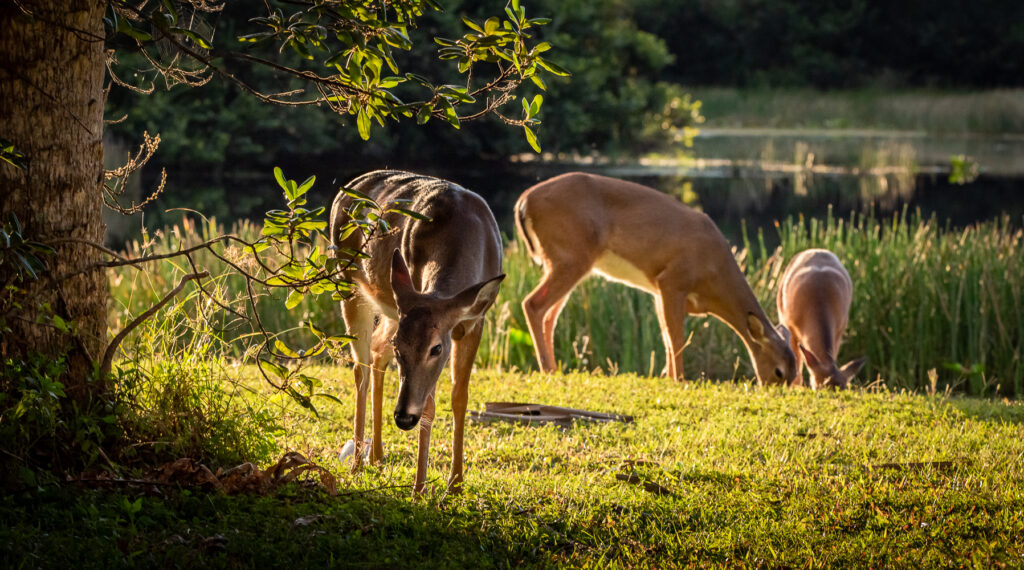
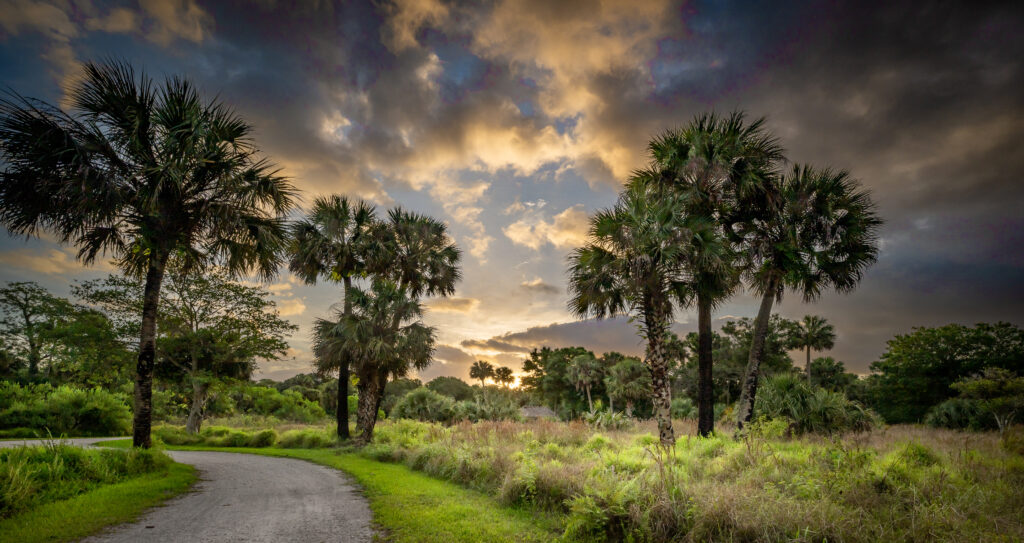
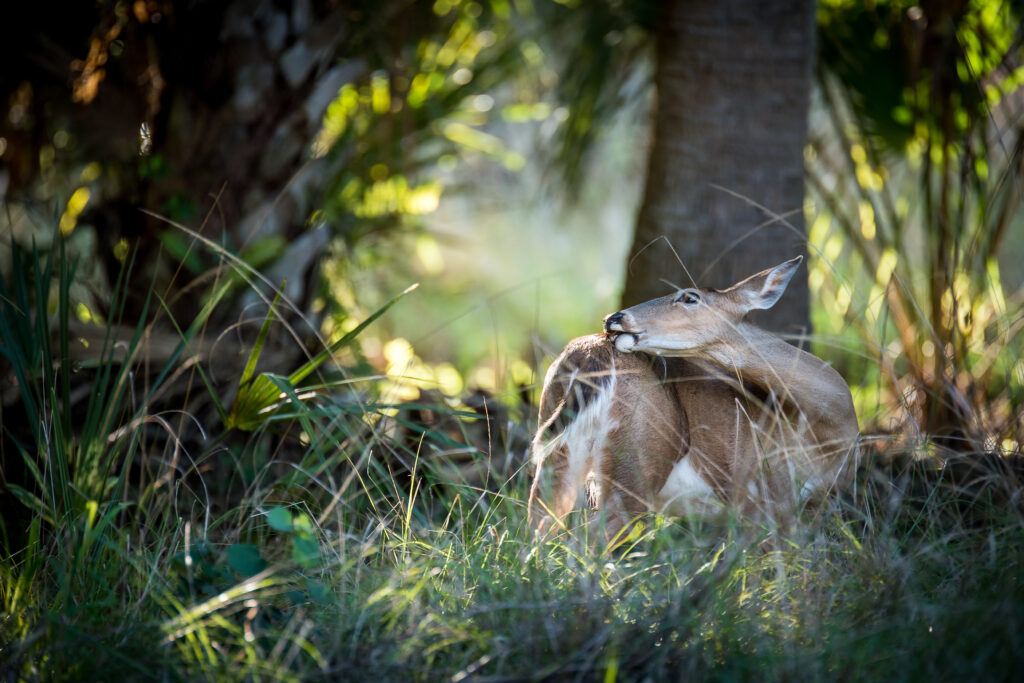
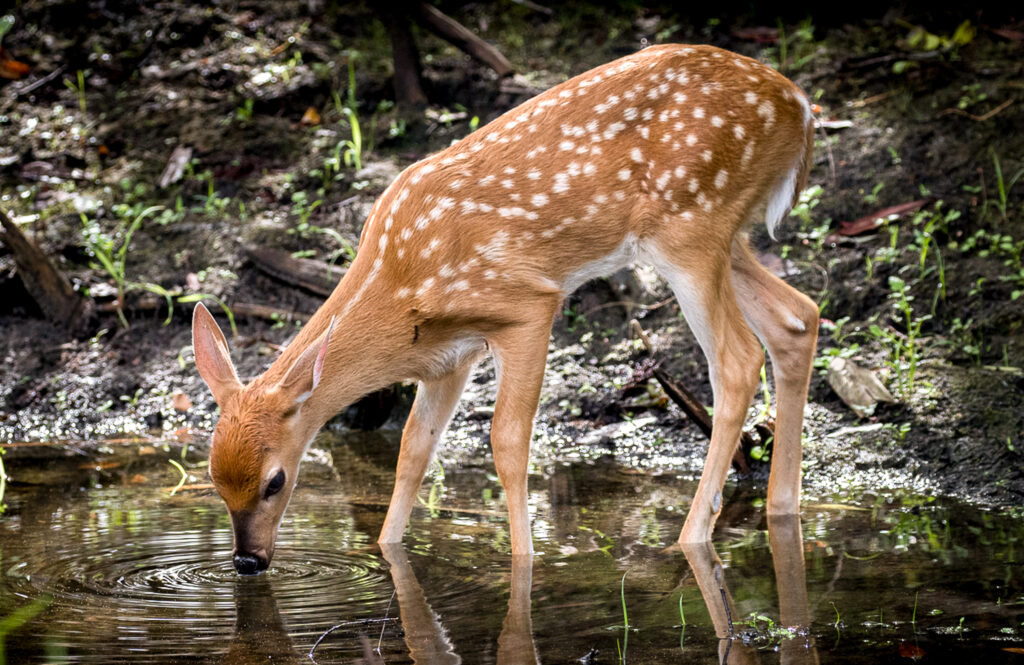
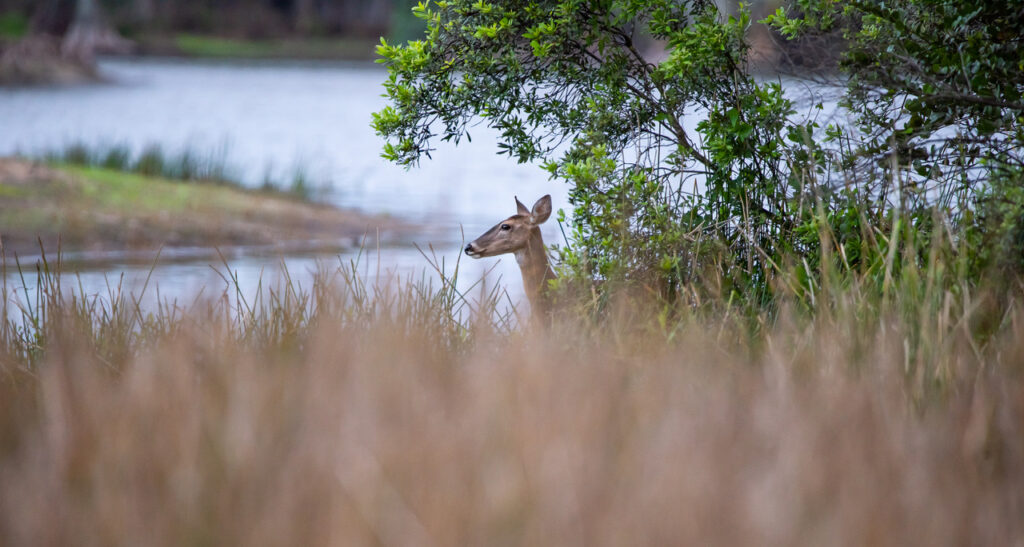
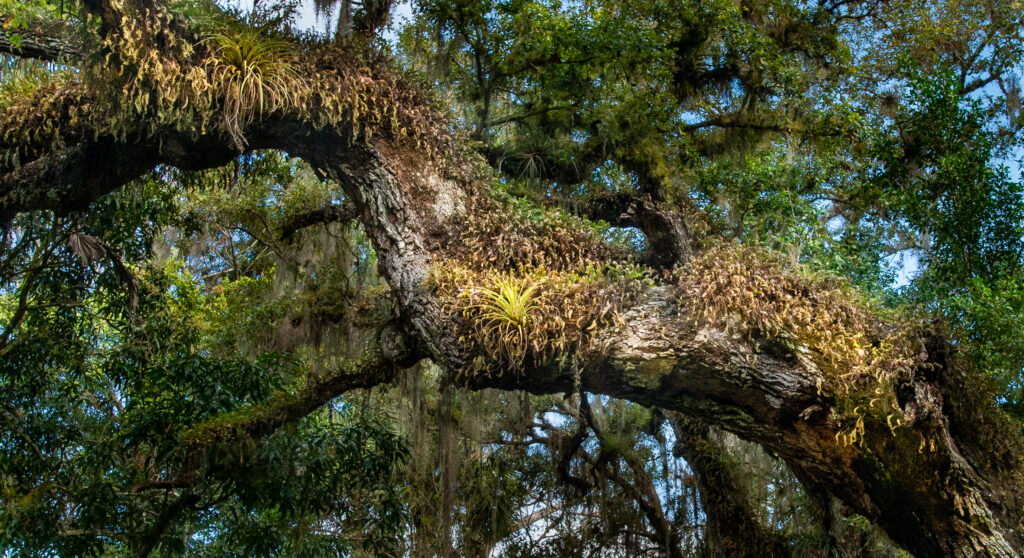
Looking up for Owls and Woodpeckers is easier (and a lot safer) after dismounting from the bike and walking. The slower pace allows us to scan the branches of the century-old oaks and cypress along Riverbend’s “Military Trail” Spying an Owl is nearly impossible among the thousands of air plants and ferns and gnarled tree branches. We stop and stand still every ten or twenty yards and listen to the sounds of the forest. We hear but are not fooled by the cooo of ground doves–which remind us of the hoot cartoon owls on TV.
The Barre Owl makes an alien clicking and short harsh caw. Instead we hear a ruckus of song birds angry at a predator in their territory. And there, motionless in the shadows of a thick Oak are two fledgling Barre Owls–brother and sister perhaps–perched within kissing distance. What an interesting behavior to witness! For half and hour, they seemingly whisper in each others ears. In just the first hours of the new day, we have witnessed a mated pair of Ospreys communicating back and forth while hunting and nest protecting, deer moving together as one through the bush, and now two young Owl’s nodding heads, preening each other and showing affection for one another. The camera gives us an intimate view into the live’s of nature’s beasts, and they are exhibiting very human qualities.
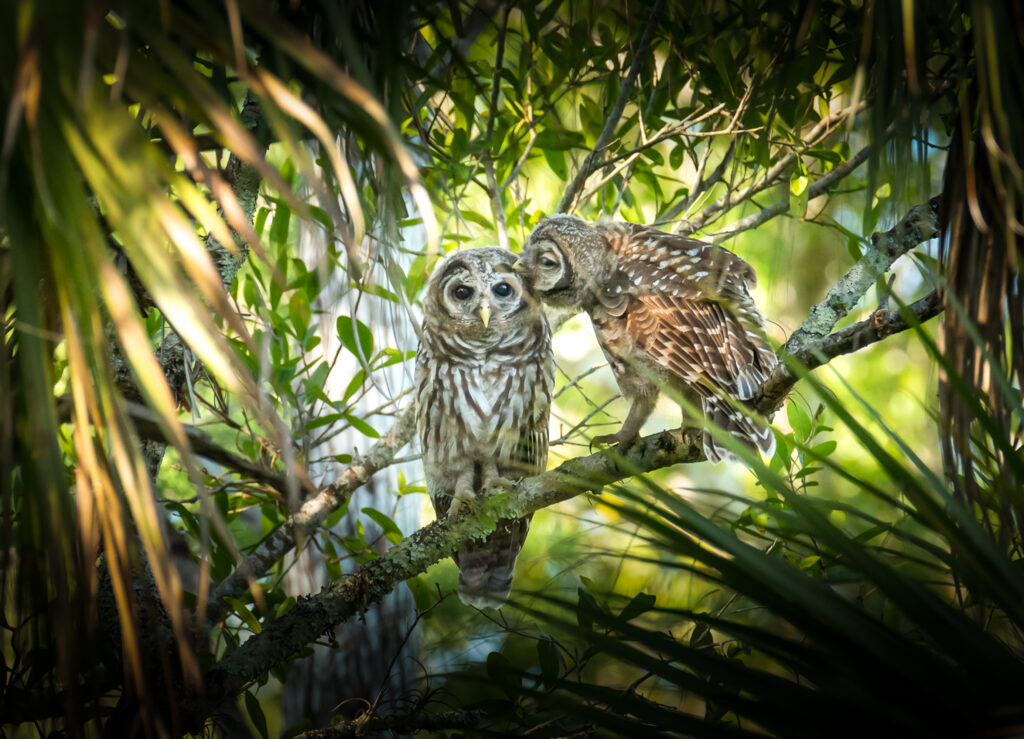
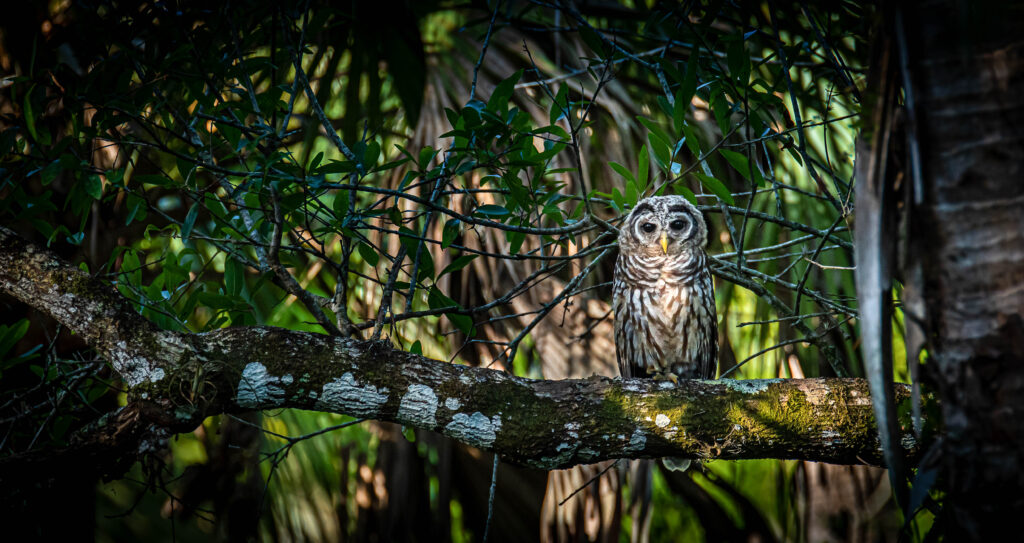
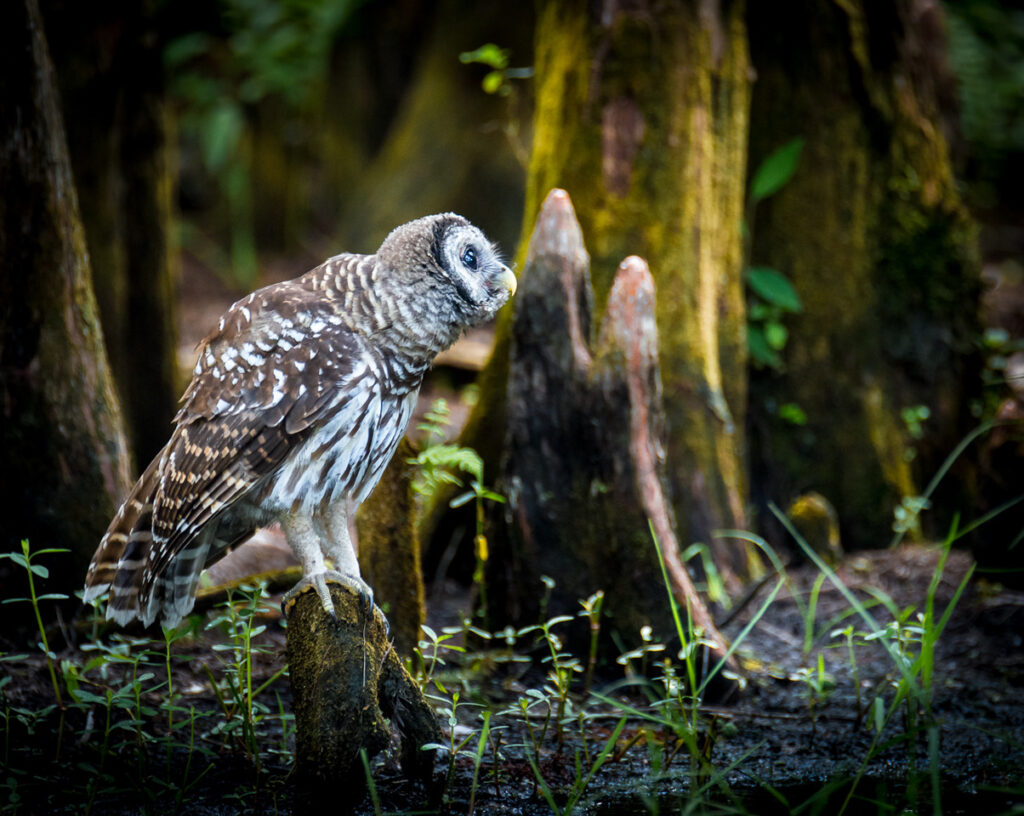

Take out the binoculars and scan closely. Somewhere among these Islands of Sawgrass is a nest of endangered Sandhill Cranes. Listen for their loud bugling. Glimpse a long neck peering out from a tussle of bush. The bright red crown , large, slender body and long-legs give away this most unique creature. Today is traveling day. Both adults walk side by side from their nest. Since they mated for life, ten or more seasons ago they have migrated across North America, flying wing to wing, to lay one egg per spring here at this spot in South Florida. Somewhere beneath their feet is a two-day old chick who all swim and walk for the first time today. Mother and father nudge her along. They will care for her for the next four to six months before another round trip vacation to America’s northwest.
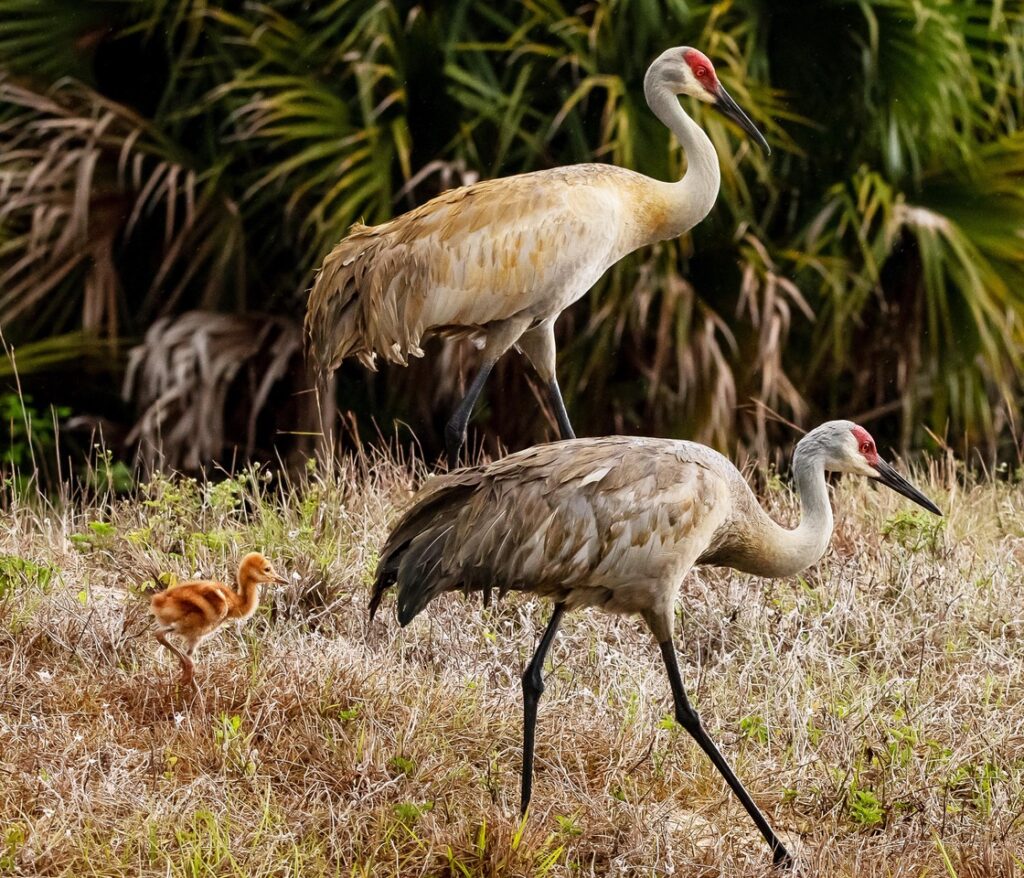
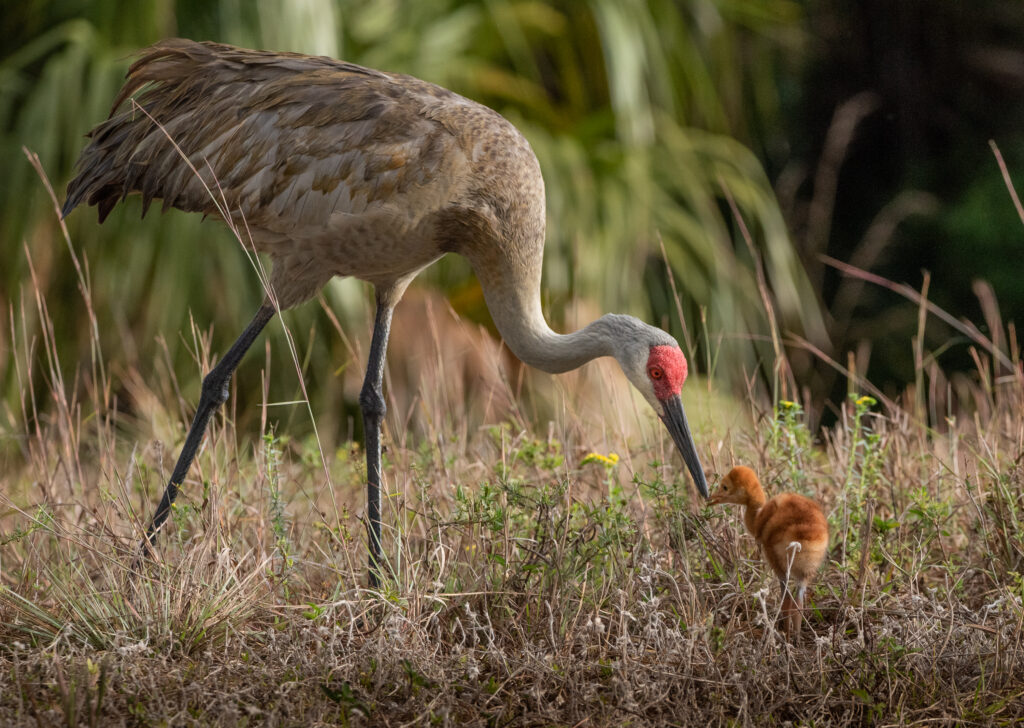
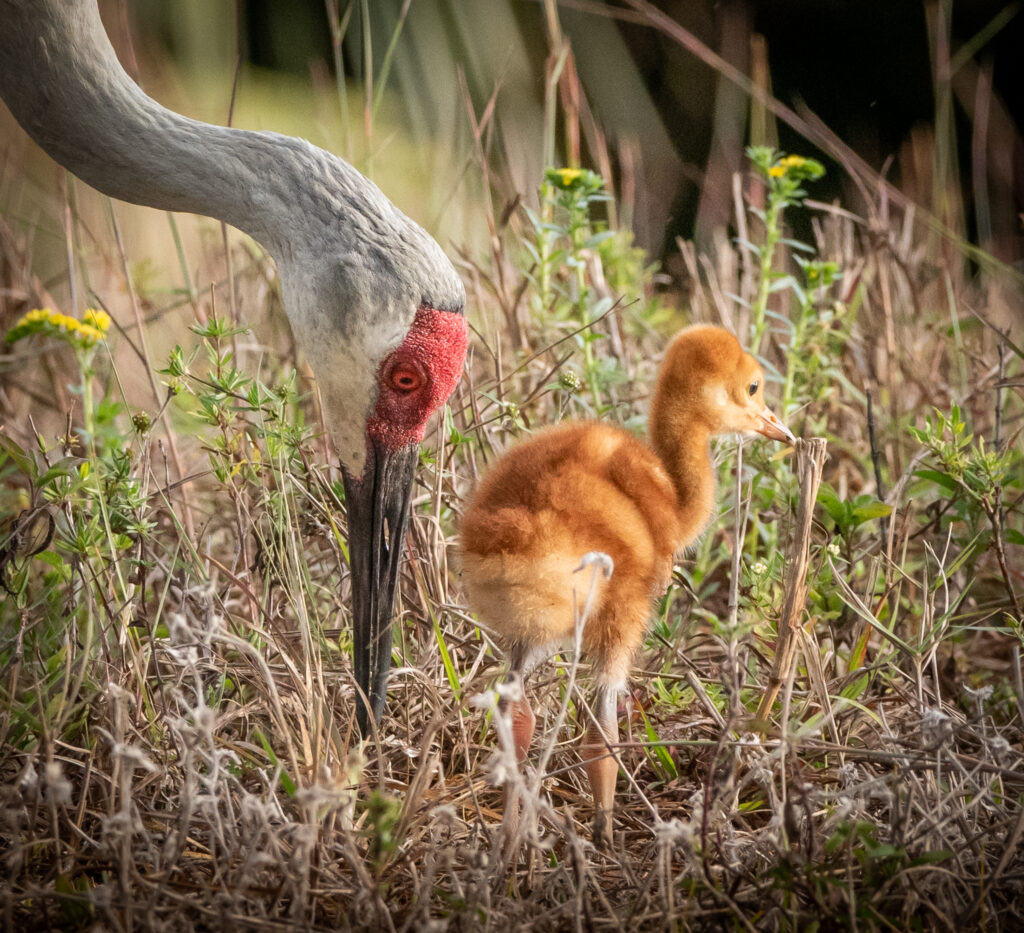
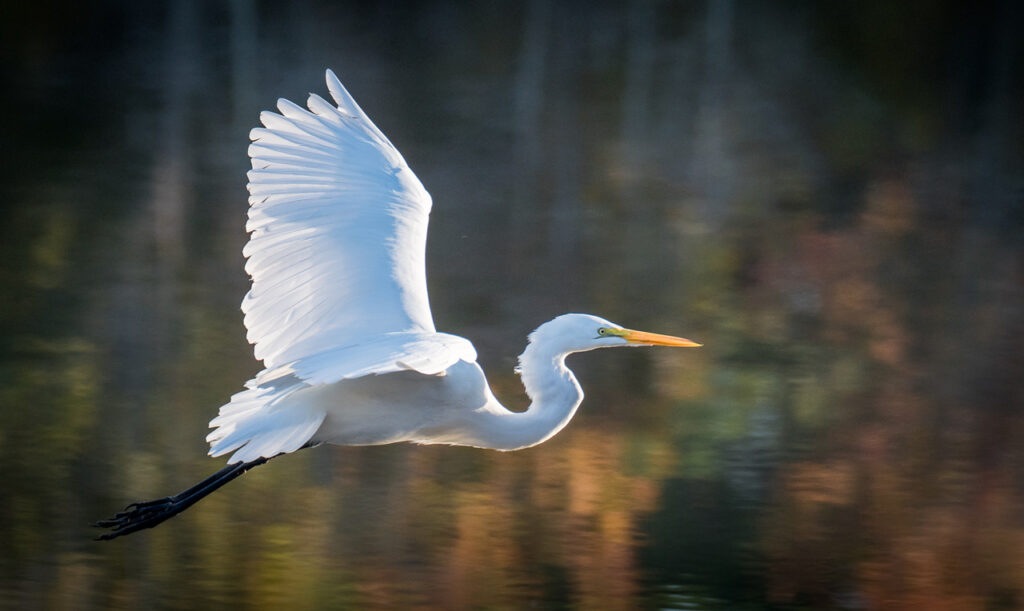
A Great White Egret glides inches above the surface of the water. This elegant creature reminds us of an important story. In the 1890’s women’s hats containing bird feathers were a fashion craze from Paris to New York City. Hunters by the thousands came to South Florida. The Egret and many other waterbirds were hunted to near extinction. To the rescue came The Audubon Society ,President Theodore Roosevelt and the Florida Legislature which outlawed the killing of any non-game bird. This is a good time to tell another important story: In the seventies and eighties, when Palm Beach Counties’ population was exploding from 300,000 to over a million, the forward thinking Palm Beach County Commissioners began purchasing and preserving natural lands.
Today, Riverbend and Green Cay Nature Preserve are just two of nearly 100 public parks managed by Palm Beach Counties Department of Parks and Recreation. Thanks to the folks at PBCPR, Riverbend’s wildlife is easy to access from meticulously maintained walking paths, equestrian trails and canoe launches. Green Cay Nature Preserve boasts nearly two miles of boardwalks that traverse one of South Florida’s most active bird nesting sites.
